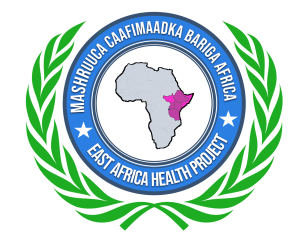
WHAT IS DIABETES?
Diabetes mellitus is a group of diseases characterized by high levels of blood glucose resulting from defects in insulin production, insulin action, or both. Diabetes can be associated with serious complications and premature death, but people with diabetes can take steps to control the disease and lower the risk of complications.
TYPES OF DIABETES
Type 1
Type 1 diabetes was previously called insulin-dependent diabetes mellitus (IDDM) or juvenile-onset diabetes. Type 1 diabetes develops when the body’s immune system destroys pancreatic beta cells, the only cells in the body that make the hormone insulin that regulates blood glucose. This form of diabetes usually strikes children and young adults, who need several insulin injections a day or an insulin pump to survive. Type 1 diabetes may account for 5% to 10% of all diagnosed cases of diabetes. Risk factors for type 1 diabetes include autoimmune, genetic, and environmental factors.
Type 2
Type 2 diabetes was previously called non-insulin-dependent diabetes mellitus (NIDDM) or adult-onset diabetes. Type 2 diabetes may account for about 90% to 95% of all diagnosed cases of diabetes. It usually begins as insulin resistance, a disorder in which the cells do not use insulin properly. As the need for insulin rises, the pancreas gradually loses its ability to produce insulin. Type 2 diabetes is associated with older age, obesity, family history of diabetes, prior history of gestational diabetes, impaired glucose tolerance, physical inactivity, and race/ethnicity. African Americans, Hispanic/Latino Americans, American Indians, and some Asian Americans and Pacific Islanders are at particularly high risk for type 2 diabetes. Type 2 diabetes is increasingly being diagnosed in children and adolescents.
GESTATIONAL DIABETES
Gestational diabetes is a form of glucose intolerance that is diagnosed in some women during pregnancy. Gestational diabetes occurs more frequently among African Americans, Hispanic/Latino Americans, and American Indians. It is also more common among obese women and women with a family history of diabetes. During pregnancy, gestational diabetes requires treatment to normalize maternal blood glucose levels to avoid complications in the infant. After pregnancy, 5% to 10% of women with gestational diabetes are found to have type 2 diabetes. Women who have had gestational diabetes have a 20% to 50% chance of developing diabetes in the next 5-10 years.
OTHER
Other specific types of diabetes result from specific genetic conditions (such as maturity-onset diabetes of youth), surgery, drugs, malnutrition, infections, and other illnesses. Such types of diabetes may account for 1% to 5% of all diagnosed cases of diabetes.
TREATING DIABETES
In order to survive, people with type 1 diabetes must have insulin delivered by injections or a pump.
Many people with type 2 diabetes can control their blood glucose by following a careful diet and exercise program, losing excess weight, and taking oral medication.
Many people with diabetes also need to take medications to control their cholesterol and blood pressure.
Among adults with diagnosed diabetes, about 11% take both insulin and oral medications, 22% take insulin only, 49% take oral medications only, and 17% do not take either insulin or oral medications.
PREVENTING DIABETES
Research studies in the United States and abroad have found that lifestyle changes can prevent or delay the onset of type 2 diabetes among high-risk adults. These studies included people with IGT and other high-risk characteristics for developing diabetes. Lifestyle interventions included diet and moderate-intensity physical activity (such as walking for 2 1/2 hours each week). For both sexes and all age and racial and ethnic groups, the development of diabetes was reduced 40% to 60% during these studies that lasted 3 to 6 years.
Studies have also shown that medications have been successful in preventing diabetes in some population groups. In the Diabetes Prevention Program, a large prevention study of people at high risk for diabetes, people treated with the drug metformin reduced their risk of developing diabetes by 31%. Treatment with metformin was most effective among younger, heavier people (those 25-40 years of age who were 50 to 80 pounds overweight) and less effective among older people and people who were not as overweight.
There are no known methods to prevent type 1 diabetes. Several clinical trials are currently in progress.
PREVENTING DIABETES COMPLICATIONS
Glucose control
Research studies in the United States and abroad have found that improved glycemic control benefits people with either type 1 or type 2 diabetes. In general, for every 1% reduction in results of A1C blood tests, the risk of developing micro vascular diabetic complications (eye, kidney, and nerve disease) is reduced by 40%.
Blood pressure control
Blood pressure control can reduce cardiovascular disease (heart disease and stroke) by approximately 33% to 50% and can reduce micro vascular disease (eye, kidney, and nerve disease) by approximately 33%.
In general, for every 10 millimeters of mercury (mm Hg) reduction in systolic blood pressure, the risk for any complication related to diabetes is reduced by 12%.
Control of blood lipids
Improved control of cholesterol and lipids (for example, HDL, LDL, and triglycerides) can reduce cardiovascular complications by 20% to 50%.
Preventive care practices for eyes, kidneys, and feet
Detecting and treating diabetic eye disease with laser therapy can reduce the development of severe vision loss by an estimated 50% to 60%.
Comprehensive foot care programs can reduce amputation rates by 45% to 85%.
Detecting and treating early diabetic kidney disease can reduce the development of kidney failure by 30% to 70%